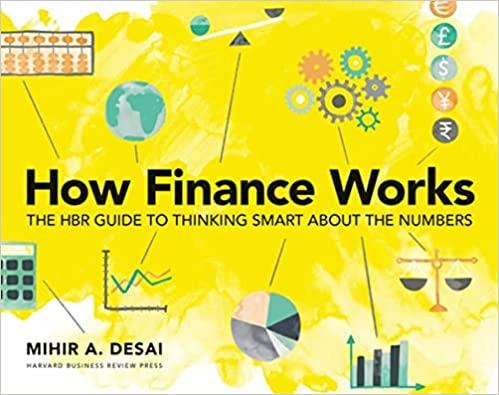Answered step by step
Verified Expert Solution
Question
1 Approved Answer
Beasley Ball Bearings paid a $ 4 dividend last year. The dividend is expected to grow at a constant rate of 5 percent over the
Beasley Ball Bearings paid a $ dividend last year. The dividend is expected to grow at a constant rate of percent over the next four years. The required rate of return is percent this will also serve as the discount rate in this problem Use Appendix B for an approximate answer but calculate your final answer using the formula and financial calculator methods.
a Compute the anticipated value of the dividends for the next four years.
Note: Do not round intermediate calculations. Round your final answers to decimal places.
tableAnticipated ValueDDDD
b Calculate the present value of each of the anticipated dividends at a discount rate of percent. Note: Do not round intermediate calculations. Round your final answers to decimal places.
tablePV of DividendsDDDDTotal
c Compute the price of the stock at the end of the fourth year
Do not round intermediate calculations. Round your final answer to decimal places.
Stock price at Year
d Calculate the present value of the year stock price at a discount rate of percent.
Note: Do not round intermediate calculations. Round your final answer to decimal places.
Present value of Year stock price
e Compute the current value of the stock.
Note: Do not round intermediate calculations. Round your final answer to decimal places.
Current value
f Use the formula given below to show that it will provide approximately the same answer as part Note: Do not round intermediate calculations. Round your final answer to decimal places.
Current value
g If current EPS were equal to $ and the PE ratio is : times higher than the industry average of what would the stock price be
Note: Do not round intermediate calculations. Round your final answer to decimal places.
Stock price
h By what dollar amount is the stock price in part different from, the stock price in part
Note: Do not round intermediate calculations. Round your final answer to decimal places.
i With regard to the stock price in part indicate which direction it would move if:
table increases, Ke increases, increases,

Step by Step Solution
There are 3 Steps involved in it
Step: 1

Get Instant Access to Expert-Tailored Solutions
See step-by-step solutions with expert insights and AI powered tools for academic success
Step: 2

Step: 3

Ace Your Homework with AI
Get the answers you need in no time with our AI-driven, step-by-step assistance
Get Started


